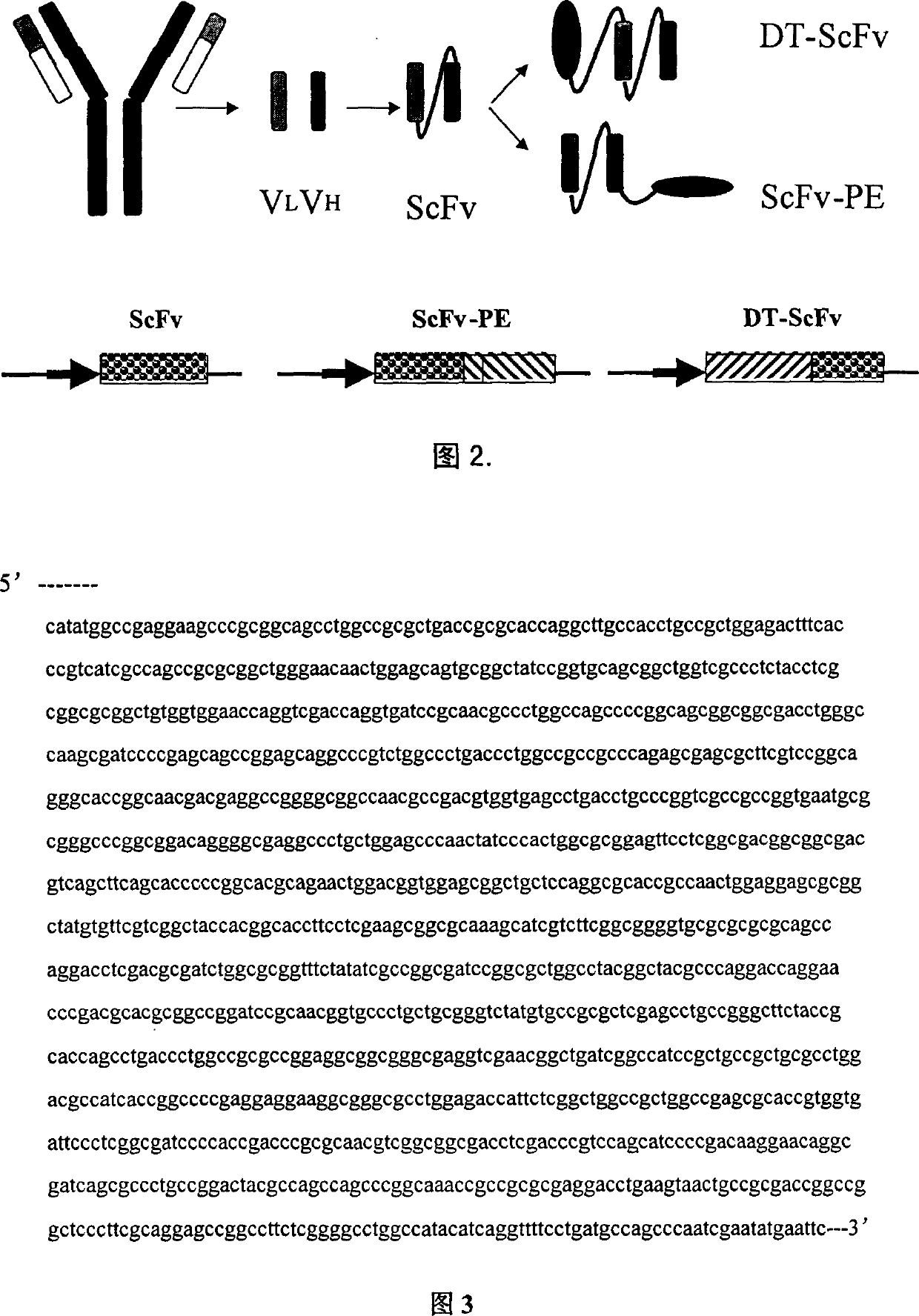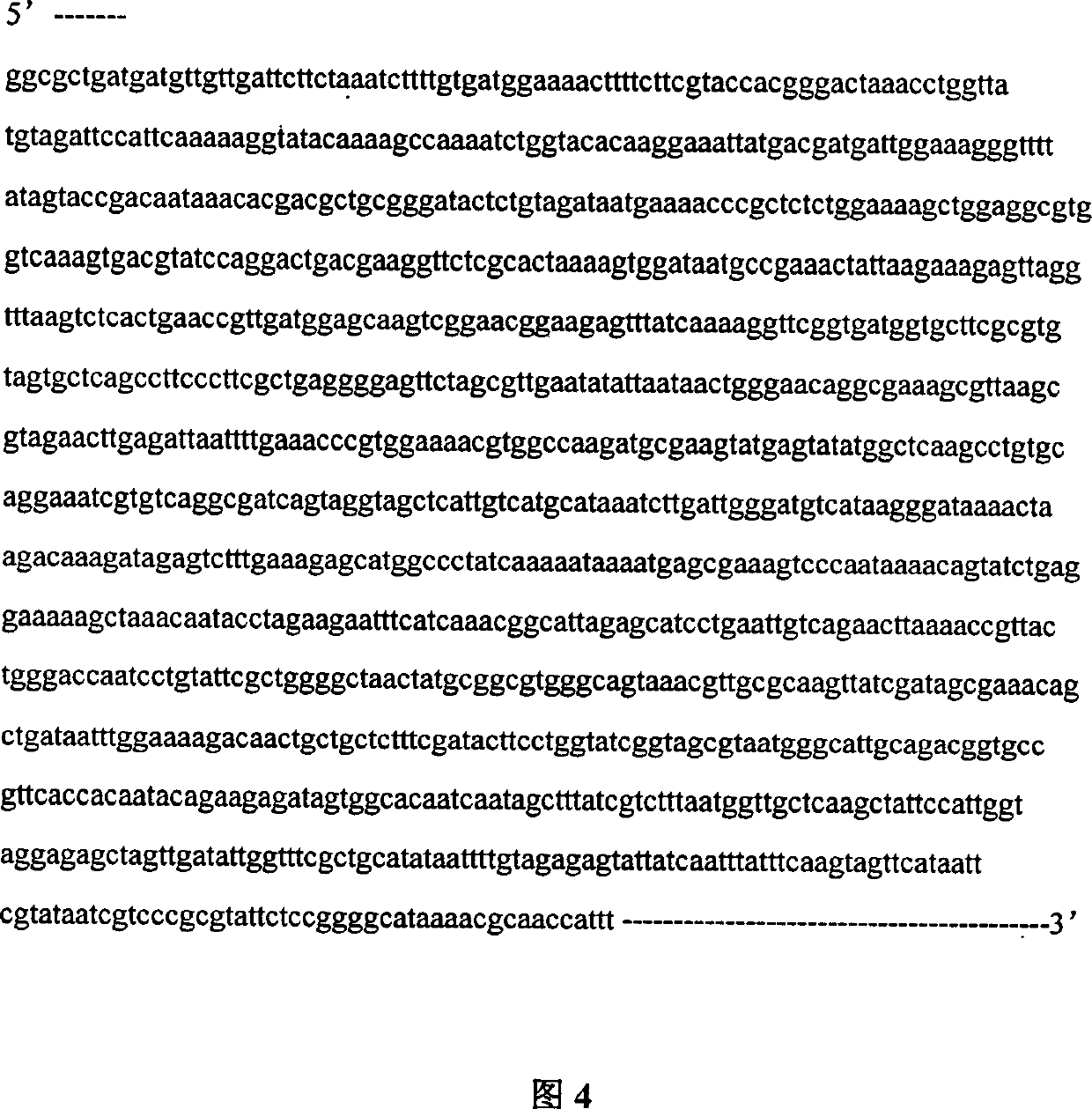Single-chain antibody resisting HIV-1 outer membrane protein and recombinant immunotoxin
A single-chain antibody and outer membrane protein technology, applied in the direction of antiviral immunoglobulin, antibody, antiviral agent, etc., can solve the problems of destruction, poor curative effect of single drug, incomplete cure of AIDS, etc., and achieve strong antigen binding characteristics Effect
- Summary
- Abstract
- Description
- Claims
- Application Information
AI Technical Summary
Problems solved by technology
Method used
Image
Examples
Embodiment Construction
[0024] The implementation method of the present invention is described below through the isolation of anti-HIV-1 outer membrane protein single-chain antibody gene and the preparation and identification of recombinant toxin.
[0025] 1. Cultivation, storage and recovery of monoclonal antibody hybridoma cell lines
[0026] Conventional methods were used for culturing, preservation and recovery of hybridoma cell lines. For specific steps, refer to "Modern Immunology Experimental Techniques" Hubei Science and Technology Publishing House, pp. 24-25, edited by Shen Guanguan and Tong Rulin. The medium used for culturing hybridoma cell lines is M-1640 complete medium.
[0027] 2. Routine gene manipulation in molecular biology
[0028]Preparation and transformation of Escherichia coli competent cells, plasmid extraction and restriction endonuclease digestion, recovery of DNA fragments, ligation of linear DNA fragments, screening and identification of recombinant plasmids, PCR amplific...
PUM
| Property | Measurement | Unit |
|---|---|---|
| molecular weight | aaaaa | aaaaa |
Abstract
Description
Claims
Application Information
 Login to View More
Login to View More - R&D
- Intellectual Property
- Life Sciences
- Materials
- Tech Scout
- Unparalleled Data Quality
- Higher Quality Content
- 60% Fewer Hallucinations
Browse by: Latest US Patents, China's latest patents, Technical Efficacy Thesaurus, Application Domain, Technology Topic, Popular Technical Reports.
© 2025 PatSnap. All rights reserved.Legal|Privacy policy|Modern Slavery Act Transparency Statement|Sitemap|About US| Contact US: help@patsnap.com



